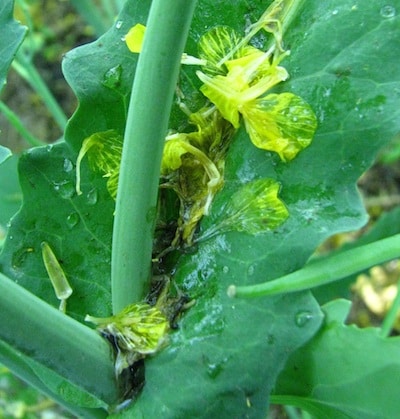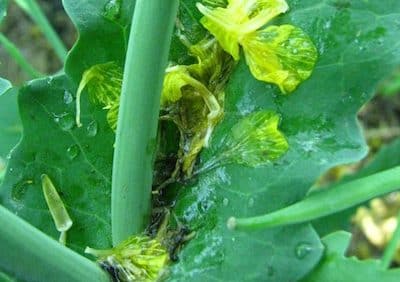
Growers with high risk conditions for sclerotinia stem rot may want to get their management plan in place. Booking fungicide may be worthwhile if you have a preferred product. This is pre-planning only. Fungicide applications must target flowers to be effective, so do not spray until a field reaches at least 20% flowering.
The following factors will determine the level of risk. Do assessments on a field by field basis as conditions can vary:
1. Moisture
Moisture is the key factor in sclerotinia stem rot risk. Good soil moisture and a few rains in the period starting two weeks before flowering and carrying through to infection after flowering will greatly increase the sclerotinia stem rot risk. (Alternatively, low rainfall and low humidity through these stages will greatly reduce the disease risk, and fungicide applications rarely provide a benefit in these conditions.)
Moisture can come from rain, relative humidity in the high 80s, or morning dew. High humidity and dew are often enough for the disease to form. Keep in mind that humidity is often higher in the canola canopy than at the local weather station or in the farm yard, so consider this when estimating disease risk. Interestingly, heavy rain can actually reduce the risk if the timing is right. Heavy and frequent rains can inhibit ascospore release by covering up apothecia, and heavy rains can wash petals off the plants.
2. Temperature
Moisture has a much larger influence than temperature, however temperature can influence severity. Night and morning lows of 15°C are ideal for sclerotinia, especially with heavy dew. Infection may not advance during the heat of the day, but it will grow at night.
Infection can be high in hot weather as long as the moisture is there. Hot days can reduce sclerotinia stem rot infection rates if heat causes infected petals to dry up and blow off the plant. Heat may also cause canola plants to drop lower leaves at an accelerated pace. If infected leaves drop before infection spreads to the stem, the heat will have indirectly stopped the infection.
3. Canopy conditions
Sclerotinia disease level is highly dependent on the microclimate within the field. Factors that result in moisture-laden canopies include:
—Variety selection: Higher disease levels will occur in varieties that have more leaf area (which usually means high yield potential, more area for falling petals to land on, and greater canopy closure which tends to trap moisture in the canopy), tall stature, and/or poor standability.
—High fertility levels: Higher nitrogen rates or the addition of manure results in heavier, more dense and thick canopies, which tend to increase humidity in the canopy.
—Degree of lodging: Lodged crops tend not to dry out quickly, and increased direct plant-to-plant contact will increase disease spread from infected to healthy tissue.
—Seeding date: Neighbouring canola fields with different seeding dates and maturities may have different levels of sclerotinia damage depending on how their flowering stages coincided with weather conditions conducive to disease infection and development.
—High plant populations: Dense stands are good for competition with weeds and earlier, more uniform maturity, but they tend to result in moist canopies. In addition, higher plant populations usually result in plants with smaller, weaker stems that are more prone to lodging. However, thin stands are not immune either. Conventional wisdom would be that with fewer plants per square foot, the canopy would be more open, less humid and at lower risk of infection. This might be true for a thin canopy with low yield potential, but if a canopy of 2-3 plants per square foot fills in, it will have very large plants with lots of leaf material, lots of branches, and a longer flowering period. This could actually increase the risk of yield loss from sclerotinia because the crop is flowering longer and dropping petals into the canopy over a longer period. With larger leaves and more branches, these plants have more surface areas for petals to land.
In general, growers can’t bank on wider row spacing and low seeding rates to reduce risk. Any risk reduction from these strategies requires the weather conditions to cooperate. If winds move dry air through the canopy and keep the crop dry for much of the day, then a more open canopy may be beneficial. But if wet conditions predominate throughout flowering, then any risk reduction will be minimal. And once plants are infected, a few hours of hot and dry each afternoon may stop the pathogen for a short part of the day, but it will restart again in evening with cool humid conditions.
4. Rotation
Because environment is such a large factor in sclerotinia infection rates, and with so many acres of host crops (e.g. canola, beans, lentils, sunflowers) across the Prairies, rotation on any one field does little to reduce the sclerotinia stem rot risk.
Read the full Canola Watch resource article on sclerotinia stem rot management.

